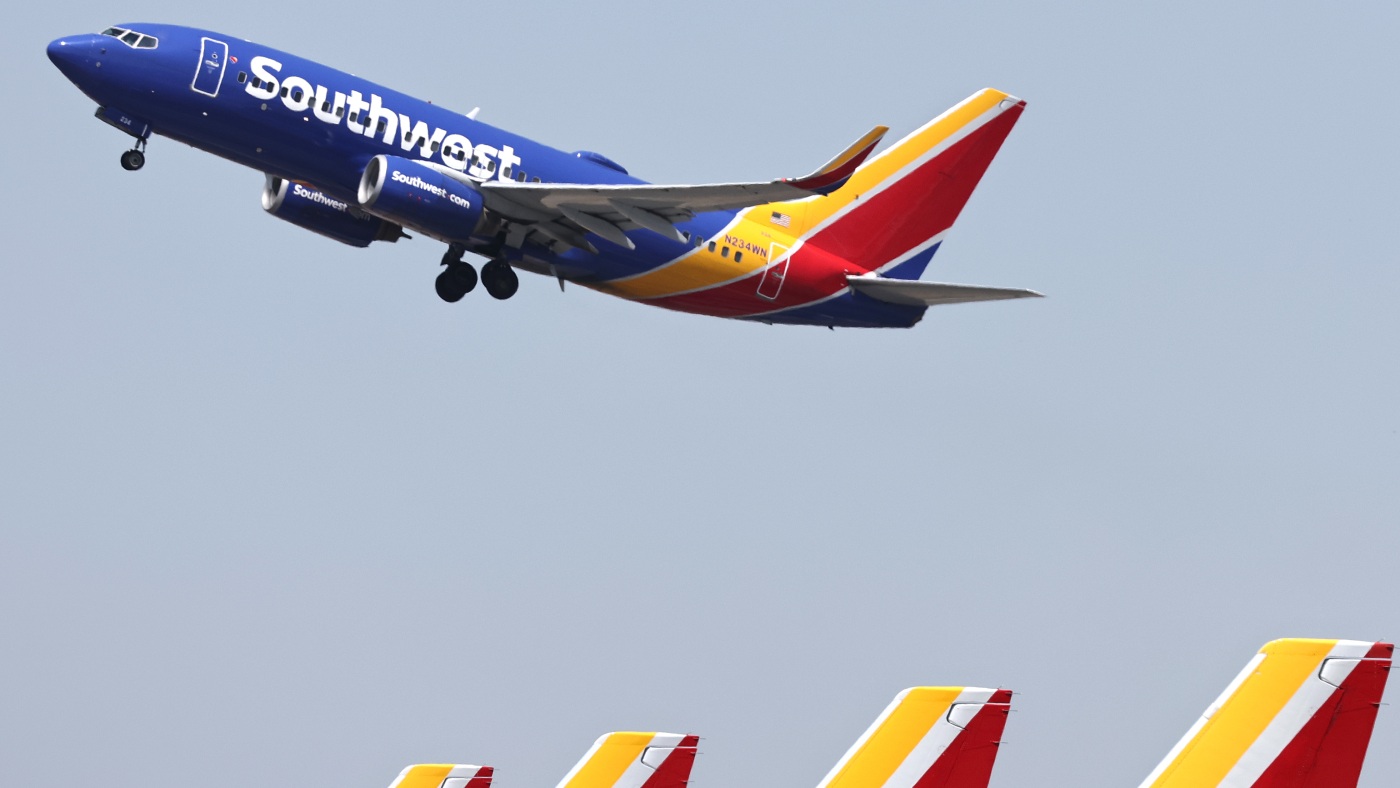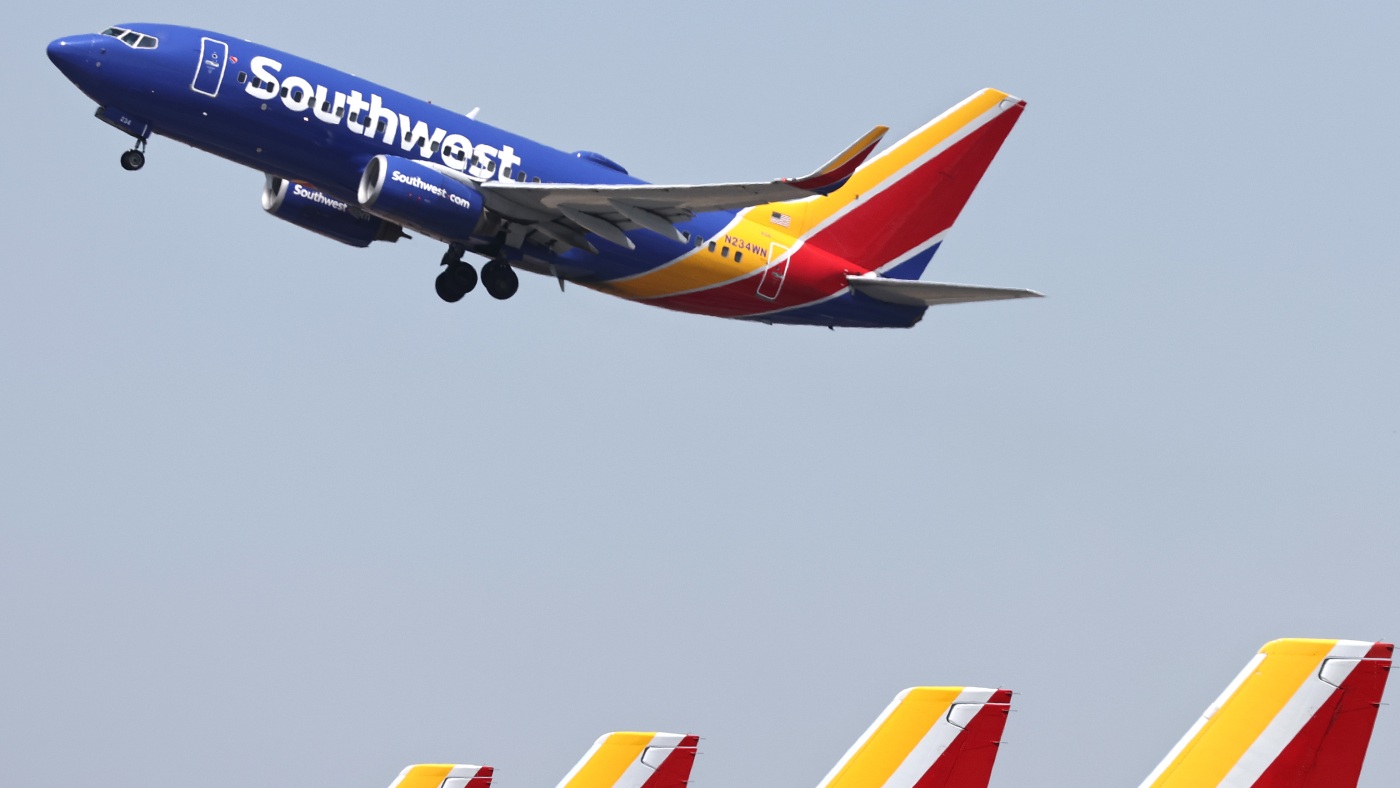Near Miss Over Burbank: Analyzing the Southwest Incident
A Harrowing Escape
The skies, often perceived as a realm of freedom and adventure, can sometimes turn into a stage for unforeseen dangers. On a seemingly ordinary Friday, Southwest Airlines flight #1496 from Hollywood Burbank Airport to Las Vegas became the center of a harrowing near-miss incident. The flight, which had ascended smoothly into the California sky, was suddenly interrupted by a blaring alarm in the cockpit. The pilots, faced with an imminent threat, executed an “aggressive” dive, plummeting hundreds of feet in mere seconds. Passengers, caught off guard, were thrown from their seats, some striking the cabin ceiling. This was not a scene from a Hollywood blockbuster but a real-life brush with disaster that underscored the ever-present risks lurking in the skies.
The incident brought into sharp focus the intricacies and potential vulnerabilities of air traffic control and safety protocols. The rapid descent, though necessary to avoid a collision, subjected the aircraft and its passengers to significant G-forces, leading to injuries, particularly among the flight attendants who were moving about the cabin at the time. The aircraft eventually recovered and continued its journey to Las Vegas, but the cabin was left shaken by the near-disaster.
The Anatomy of a Dive
The Southwest flight encountered another aircraft, identified as a Hawker Hunter, in its flight path shortly after takeoff. The Traffic Collision Avoidance System (TCAS) alerted the pilots to the impending collision. TCAS is an onboard system designed to operate independently of ground-based air traffic control (ATC), providing pilots with guidance on how to avoid potential mid-air collisions.
In response to the TCAS alert, the pilots initiated a rapid descent. Flight tracking data shows the aircraft dropped approximately 475 feet in a short period. This abrupt change in altitude subjected those on board to significant G-forces, leading to injuries. Following the evasive maneuver, the aircraft recovered and continued its journey to Las Vegas, albeit with a cabin shaken by the near-disaster.
Unpacking the Contributing Factors
While the immediate cause of the incident appears to be the proximity of the Hawker Hunter, several underlying factors likely contributed to the near-miss. Investigating these factors is crucial for preventing future occurrences.
Air Traffic Control Oversight
One of the primary questions arising from this incident is the role of air traffic control. How did two aircraft end up on converging paths in such close proximity? ATC is responsible for maintaining safe separation between aircraft, and a failure in this system is a serious concern. Factors such as communication breakdowns, misidentification of aircraft, or procedural errors could have played a role.
Hawker Hunter Operations
The presence of a Hawker Hunter, a vintage jet aircraft, also raises questions. What type of flight operation was it conducting? Were proper clearances and coordination procedures followed? Vintage aircraft operations often require specific attention due to their unique performance characteristics and potential communication limitations.
TCAS Effectiveness
The fact that TCAS activated highlights its importance as a safety net. However, it also underscores the limitations of relying solely on automated systems. TCAS is designed to provide last-resort collision avoidance, and its activation suggests that other layers of safety had already been compromised.
Airport Proximity and Airspace Complexity
Hollywood Burbank Airport is known for its challenging location, nestled in a valley surrounded by mountains. This geographical complexity can make air traffic control more demanding. Furthermore, the airspace around major metropolitan areas is often congested, increasing the risk of conflicts.
Ramifications and the Road Ahead
The Southwest incident serves as a stark reminder of the potential for mid-air collisions and the importance of robust safety measures. Beyond the immediate injuries and trauma experienced by those on board, the incident has broader implications for the aviation industry.
Regulatory Scrutiny
The FAA will undoubtedly launch a thorough investigation into the event. This investigation will likely focus on ATC procedures, communication protocols, and the operational aspects of both the Southwest flight and the Hawker Hunter. Any identified shortcomings will likely lead to corrective actions and potentially new regulations.
Pilot Training and Procedures
The incident may also prompt a review of pilot training and emergency procedures. Pilots must be prepared to react swiftly and decisively in collision avoidance scenarios, and ongoing training is essential to maintain these skills.
Technological Enhancements
While TCAS proved effective in this instance, there is always room for improvement in collision avoidance technology. Research and development efforts are focused on enhancing the accuracy, reliability, and integration of these systems. Automatic Dependent Surveillance-Broadcast (ADS-B) is a technology being implemented that enhances air traffic surveillance, potentially reducing the risk of such incidents.
Public Confidence
Incidents like this can erode public confidence in air travel. Transparency and accountability in the investigation process are crucial to restoring trust and demonstrating that the aviation industry is committed to safety.
A Moment for Reflection
The near-miss over Burbank is more than just an isolated event; it’s a critical learning opportunity for the aviation community. It underscores the importance of vigilance, redundancy, and continuous improvement in all aspects of air safety. From air traffic controllers to pilots, from regulators to aircraft manufacturers, everyone has a role to play in preventing future incidents. The incident also offers a powerful reminder to passengers of the inherent risks involved in air travel, and the need to appreciate the skill and dedication of the professionals who work tirelessly to keep us safe.
In the grand tapestry of aviation history, this near-miss will be remembered not just for the drama it unfolded, but for the lessons it imparts. It is a testament to the resilience of the human spirit and the relentless pursuit of safety in the skies. As we reflect on this incident, let us also celebrate the advancements in technology and the dedication of those who ensure that our journeys through the clouds remain as safe as possible.








